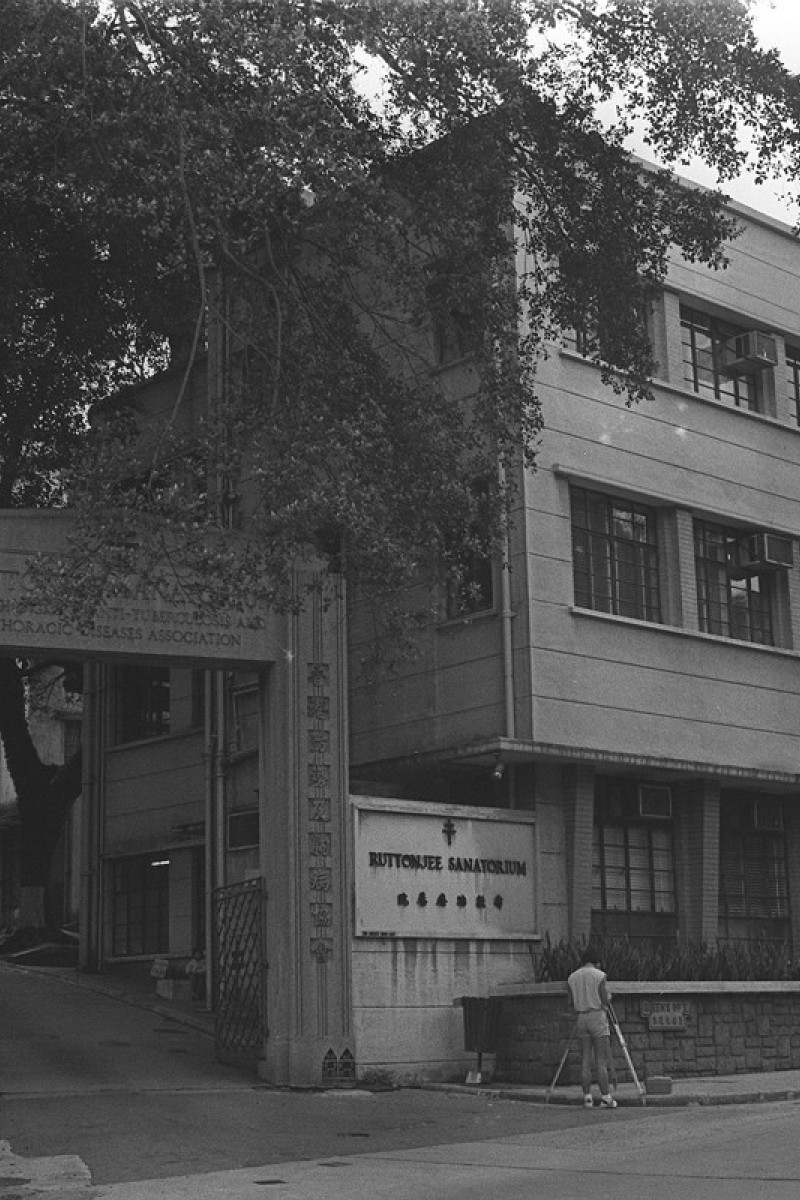
Hong Kong stories: The Parsi businessman who became a champion of public health
- Jehangir Hormusjee Ruttonjee faced business failures, political unrest and personal tragedy in Hong Kong, but his devotion to the city and its people never wavered
- Learn more about the man behind one of the city's most well-known hospitals
 The hospital began as a small sanatorium in 1949.
The hospital began as a small sanatorium in 1949. From the time the first brick was laid, the hospital was always destined to be a driving force in improving public health in the city. It was founded by Jehangir Hormusjee Ruttonjee, a prominent Parsi trader from India, as a tribute to the daughter he lost to tuberculosis.
Portrait of Jehangir Hormusjee Ruttonjee.
Born in Bombay (now Mumbai) in 1880, Ruttonjee was sent to Hong Kong at the age of 12 by his father, Hormusjee Ruttonjee, who had been trading wines, spirits and other provisions in the city since 1884.
Hong Kong stories: The Indian immigrant who helped build HKU and the road that bears his name
After graduating from St Joseph’s College, the younger Ruttonjee joined his father’s business, eventually taking it over in 1913.
At 22, Ruttonjee married, and had a son, Dhun, and two daughters Tehmi and Freni. Known for his big heart, Ruttonjee also adopted his two young nephews and niece – Rusy, Beji and Minnie Shroff – after their father was lost at sea during a typhoon.
After years of successful trading, Ruttonjee wanted to produce something of his own. As Hong Kong was largely reliant on imported beer in the early 1900s, Ruttonjee saw the opportunity to establish his own brewery.
His family and friends tried to discourage him from the venture, but with the support of Sir Reginald Edward Stubbs, the Governor of Hong Kong at the time, Ruttonjee persisted. Hong Kong Brewers & Distillers Ltd opened its doors in 1931.
Hong Kong stories: How Nepalese Gurkha soldiers helped shape the history of our city
Unfortunately, the brewery suffered several years of bad luck, and eventually had to be closed down. Ruttonjee was undeterred. He bought another brewery, and this time, it was a success.
Yet misfortune struck again late in 1941 when Hong Kong fell under Japanese control during the second world war. The brewery was seized, and in 1942, Ruttonjee and his sons were arrested, accused of helping war prisoners inside Stanley Internment Camp. They were detained and tortured for nine months, and later sentenced to five years’ imprisonment.
During that time, the city was hit by outbreak of tuberculosis. It sadly claimed the life of Ruttonjee’s daughter, Tehmi, in 1943. Ruttonjee was determined to do something to tackle this deadly disease.
In 1948, as the city began to recover from the war, Ruttonjee called on Hong Kong’s people to support his campaign; later that year, the Hong Kong Anti-Tuberculosis Institution was established.
It is known today as the Hong Kong Tuberculosis, Chest and Heart Diseases Association, and sits next to Ruttonjee Hospital on Queen’s Road East. Over the years, it has paved the way for many advances in the prevention and diagnosis of diseases of the chest, heart and lungs.
Hong Kong stories: The Indian immigrant who helped build HKU and the road that bears his name
A second facility – Ruttonjee Sanatorium – was built in Wan Chai in 1949. This would become Ruttonjee Hospital in 1991. After Ruttonjee died in 1960, his son carried on his philanthropic work.
He was in turn succeeded by Ruttonjee’s adopted son, Rusy Shroff. To date, eight medical facilities have been established in Hong Kong under the Ruttonjee name, including a home for elderly care, and education centres for medical research.
The family’s presence in the city remains strong to this day. Shroff continued to champion the causes that his father loved, sitting on the board for the Ruttonjee Hospitals until his death in November 2017. His wife continues to uphold the family’s legacy.
